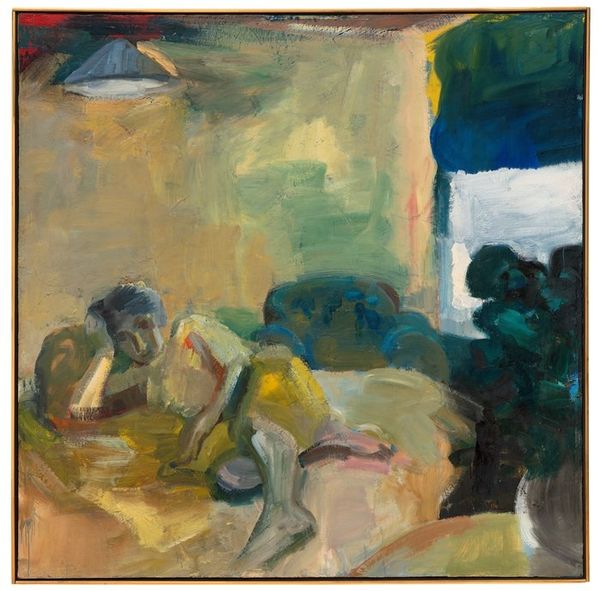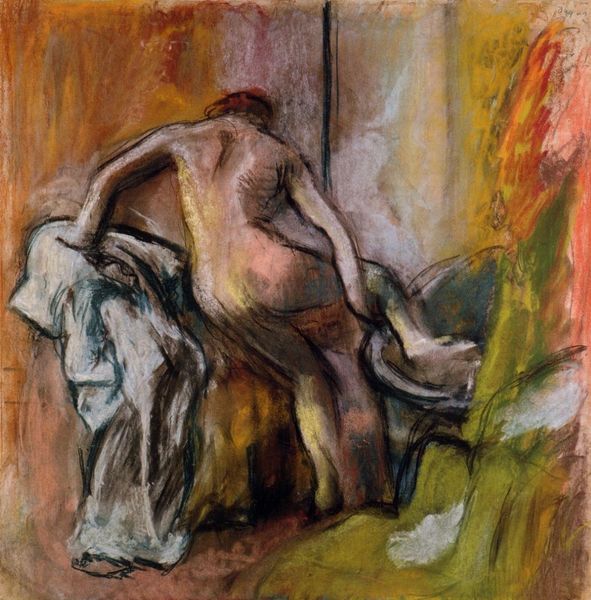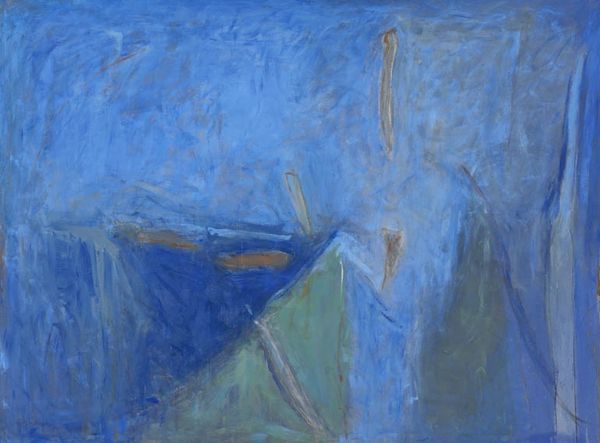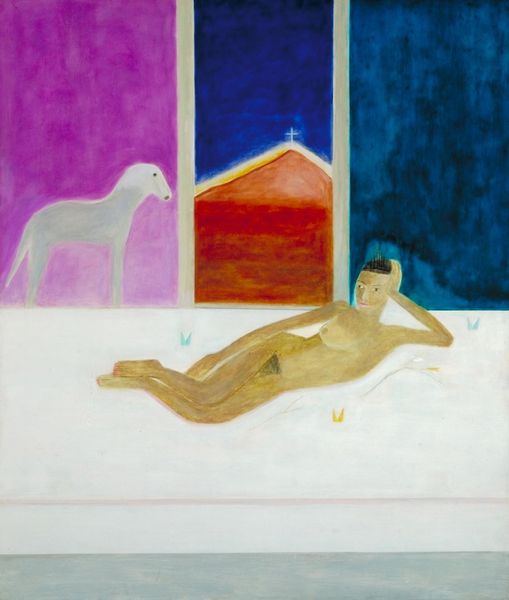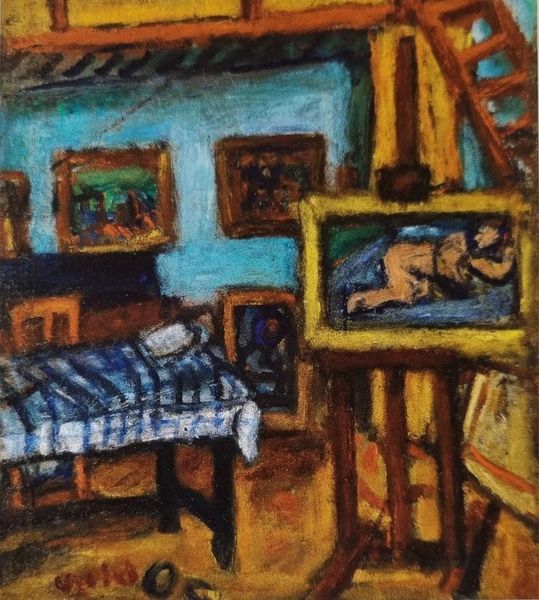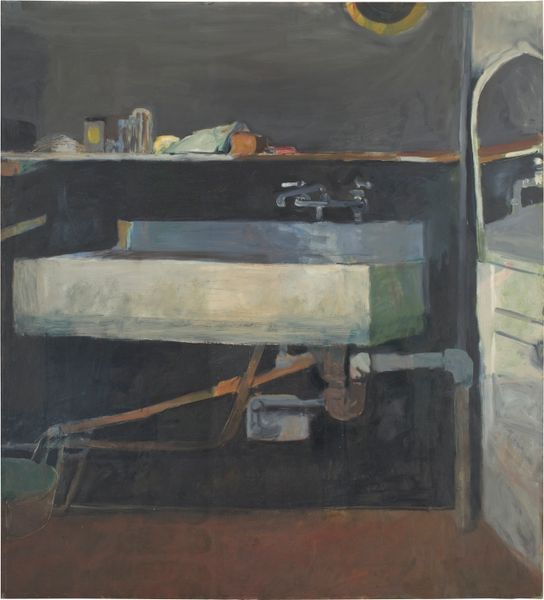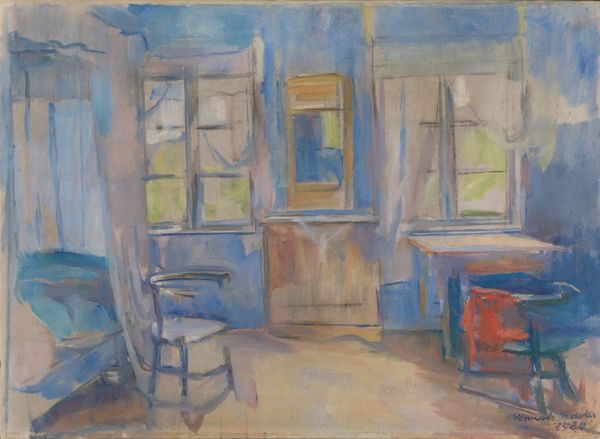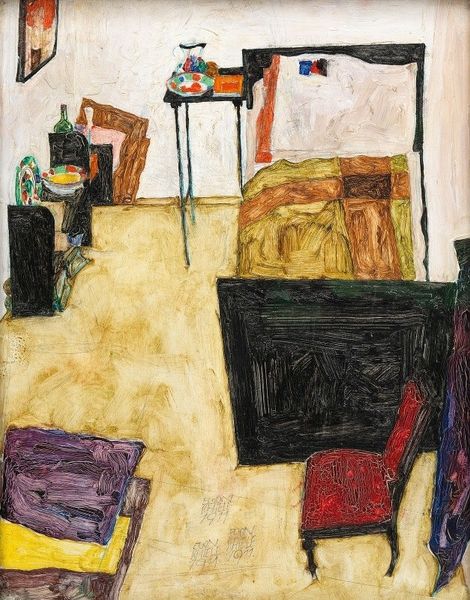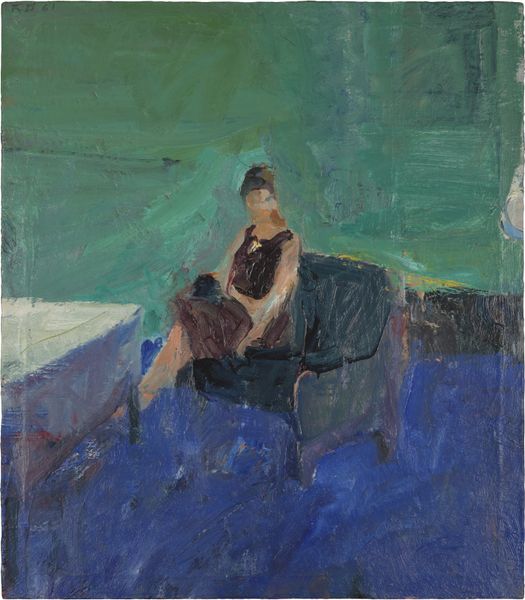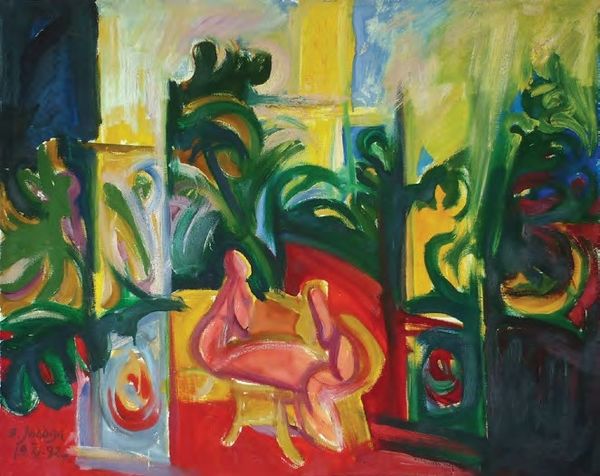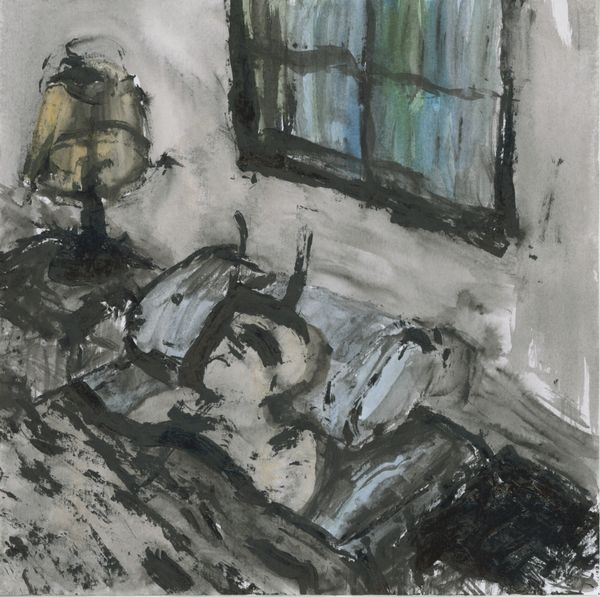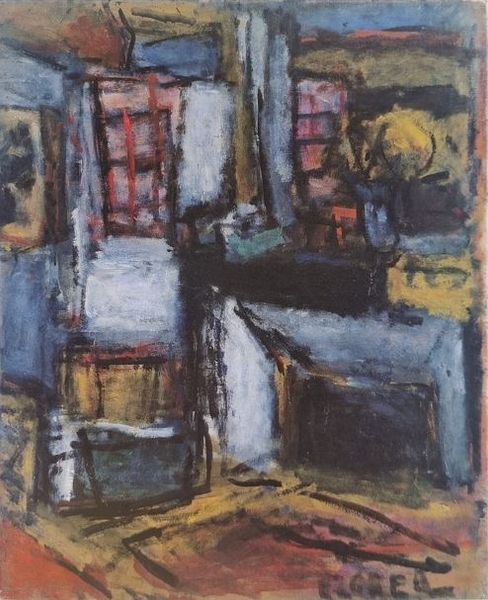
watercolor
#
portrait
#
water colours
#
figuration
#
oil painting
#
watercolor
#
expressionism
#
modernism
Copyright: Public Domain: Artvee
Curator: Welcome, everyone. We’re now in front of Edvard Munch’s “Man’s Body on an Autopsy Table,” created sometime between 1928 and 1932. Editor: It's unsettling. The stark blues and greens, combined with that earthy figure... there’s a visceral coldness to it. A palpable sense of death hangs in the air of this watercolor. Curator: Indeed. It’s fascinating to consider the context of its creation. During this period, Munch was deeply preoccupied with illness and mortality, fueled, in part, by his own declining health. It reflects the anxieties of modern medicine's detached view of the human body, where it is often treated as a spectacle rather than a vessel. Editor: You see that in the application, too. Look how thinly the watercolor washes are applied, almost skeletal in themselves. It speaks volumes about artistic choices reflecting a larger trend of deconstructing form and probing societal taboos of how labor shapes both life and death, physically imprinting itself. Curator: Absolutely. It challenges traditional academic approaches. Rather than glorifying the human form, Munch presents its vulnerability within the medical gaze. And we can’t ignore that it was painted during a rise of public institutions being established. How that may have impacted access to seeing medical procedures in an objective and observing manner, rather than fearful. Editor: And watercolor! Typically thought of as delicate, almost feminine. But here, it underscores a stark, masculine subject…challenging conventions and highlighting materiality that forces our view, questioning how certain mediums are associated with subjects based on their cultural use. Curator: A potent subversion. And note the composition, the subject beneath the window's cold light. There is also what looks to be structural gridlines that almost makes the painting look staged. Do you think this reinforces the voyeuristic quality you were initially talking about? Editor: Exactly! We witness the mechanics of viewing and deconstruction of self. In essence, a potent statement of society viewing us through glass and the consequences of how our laboring class is perceived under such bright spotlights. Curator: Food for thought, definitely, as we move on to our next piece... Editor: Indeed. It is always good to question our pre-conceived notions and material impacts within societies through art.
Comments
No comments
Be the first to comment and join the conversation on the ultimate creative platform.
